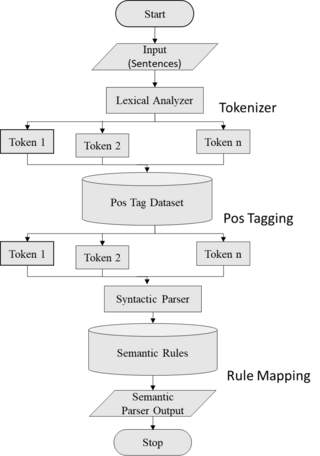Word-sense disambiguation (WSD) is the process of identifying which sense of a word is meant in a sentence or other segment of context. In human language processing and cognition, it is usually subconscious/automatic but can often come to conscious attention when ambiguity impairs clarity of communication, given the pervasive polysemy in natural language. In computational linguistics, it is an open problem that affects other computer-related writing, such as discourse, improving relevance of search engines, anaphora resolution, coherence, and inference.
Question answering (QA) is a computer science discipline within the fields of information retrieval and natural language processing (NLP) that is concerned with building systems that automatically answer questions that are posed by humans in a natural language.
A paraphrase or rephrase is the rendering of the same text in different words without losing the meaning of the text itself. More often than not, a paraphrased text can convey its meaning better than the original words. In other words, it is a copy of the text in meaning, but which is different from the original. For example, when someone tells a story they heard in their own words, they paraphrase, with the meaning being the same. The term itself is derived via Latin paraphrasis, from Ancient Greek παράφρασις (paráphrasis) 'additional manner of expression'. The act of paraphrasing is also called paraphrasis.
Semantic similarity is a metric defined over a set of documents or terms, where the idea of distance between items is based on the likeness of their meaning or semantic content as opposed to lexicographical similarity. These are mathematical tools used to estimate the strength of the semantic relationship between units of language, concepts or instances, through a numerical description obtained according to the comparison of information supporting their meaning or describing their nature. The term semantic similarity is often confused with semantic relatedness. Semantic relatedness includes any relation between two terms, while semantic similarity only includes "is a" relations. For example, "car" is similar to "bus", but is also related to "road" and "driving".
Sentiment analysis is the use of natural language processing, text analysis, computational linguistics, and biometrics to systematically identify, extract, quantify, and study affective states and subjective information. Sentiment analysis is widely applied to voice of the customer materials such as reviews and survey responses, online and social media, and healthcare materials for applications that range from marketing to customer service to clinical medicine. With the rise of deep language models, such as RoBERTa, also more difficult data domains can be analyzed, e.g., news texts where authors typically express their opinion/sentiment less explicitly.
A relationship extraction task requires the detection and classification of semantic relationship mentions within a set of artifacts, typically from text or XML documents. The task is very similar to that of information extraction (IE), but IE additionally requires the removal of repeated relations (disambiguation) and generally refers to the extraction of many different relationships.
In computational linguistics, word-sense induction (WSI) or discrimination is an open problem of natural language processing, which concerns the automatic identification of the senses of a word. Given that the output of word-sense induction is a set of senses for the target word, this task is strictly related to that of word-sense disambiguation (WSD), which relies on a predefined sense inventory and aims to solve the ambiguity of words in context.
In statistics and natural language processing, a topic model is a type of statistical model for discovering the abstract "topics" that occur in a collection of documents. Topic modeling is a frequently used text-mining tool for discovery of hidden semantic structures in a text body. Intuitively, given that a document is about a particular topic, one would expect particular words to appear in the document more or less frequently: "dog" and "bone" will appear more often in documents about dogs, "cat" and "meow" will appear in documents about cats, and "the" and "is" will appear approximately equally in both. A document typically concerns multiple topics in different proportions; thus, in a document that is 10% about cats and 90% about dogs, there would probably be about 9 times more dog words than cat words. The "topics" produced by topic modeling techniques are clusters of similar words. A topic model captures this intuition in a mathematical framework, which allows examining a set of documents and discovering, based on the statistics of the words in each, what the topics might be and what each document's balance of topics is.

In natural language processing, entity linking, also referred to as named-entity linking (NEL), named-entity disambiguation (NED), named-entity recognition and disambiguation (NERD) or named-entity normalization (NEN) is the task of assigning a unique identity to entities mentioned in text. For example, given the sentence "Paris is the capital of France", the idea is to determine that "Paris" refers to the city of Paris and not to Paris Hilton or any other entity that could be referred to as "Paris". Entity linking is different from named-entity recognition (NER) in that NER identifies the occurrence of a named entity in text but it does not identify which specific entity it is.
LEPOR is an automatic language independent machine translation evaluation metric with tunable parameters and reinforced factors.
In natural language processing (NLP), a word embedding is a representation of a word. The embedding is used in text analysis. Typically, the representation is a real-valued vector that encodes the meaning of the word in such a way that the words that are closer in the vector space are expected to be similar in meaning. Word embeddings can be obtained using language modeling and feature learning techniques, where words or phrases from the vocabulary are mapped to vectors of real numbers.
Native-language identification (NLI) is the task of determining an author's native language (L1) based only on their writings in a second language (L2). NLI works through identifying language-usage patterns that are common to specific L1 groups and then applying this knowledge to predict the native language of previously unseen texts. This is motivated in part by applications in second-language acquisition, language teaching and forensic linguistics, amongst others.

Semantic parsing is the task of converting a natural language utterance to a logical form: a machine-understandable representation of its meaning. Semantic parsing can thus be understood as extracting the precise meaning of an utterance. Applications of semantic parsing include machine translation, question answering, ontology induction, automated reasoning, and code generation. The phrase was first used in the 1970s by Yorick Wilks as the basis for machine translation programs working with only semantic representations. Semantic parsing is one of the important tasks in computational linguistics and natural language processing.
Paraphrase or paraphrasing in computational linguistics is the natural language processing task of detecting and generating paraphrases. Applications of paraphrasing are varied including information retrieval, question answering, text summarization, and plagiarism detection. Paraphrasing is also useful in the evaluation of machine translation, as well as semantic parsing and generation of new samples to expand existing corpora.
Bidirectional Encoder Representations from Transformers (BERT) is a language model based on the transformer architecture, notable for its dramatic improvement over previous state of the art models. It was introduced in October 2018 by researchers at Google. A 2020 literature survey concluded that "in a little over a year, BERT has become a ubiquitous baseline in Natural Language Processing (NLP) experiments counting over 150 research publications analyzing and improving the model."
Zero-shot learning (ZSL) is a problem setup in deep learning where, at test time, a learner observes samples from classes which were not observed during training, and needs to predict the class that they belong to. Zero-shot methods generally work by associating observed and non-observed classes through some form of auxiliary information, which encodes observable distinguishing properties of objects. For example, given a set of images of animals to be classified, along with auxiliary textual descriptions of what animals look like, an artificial intelligence model which has been trained to recognize horses, but has never been given a zebra, can still recognize a zebra when it also knows that zebras look like striped horses. This problem is widely studied in computer vision, natural language processing, and machine perception.
Emotion recognition in conversation (ERC) is a sub-field of emotion recognition, that focuses on mining human emotions from conversations or dialogues having two or more interlocutors. The datasets in this field are usually derived from social platforms that allow free and plenty of samples, often containing multimodal data. Self- and inter-personal influences play critical role in identifying some basic emotions, such as, fear, anger, joy, surprise, etc. The more fine grained the emotion labels are the harder it is to detect the correct emotion. ERC poses a number of challenges, such as, conversational-context modeling, speaker-state modeling, presence of sarcasm in conversation, emotion shift across consecutive utterances of the same interlocutor.
Pythia is an ancient text restoration model that recovers missing characters from a damaged text input using deep neural networks. It was created by Yannis Assael, Thea Sommerschield, and Jonathan Prag, researchers from Google DeepMind and the University of Oxford.

deepset is an enterprise software vendor that provides developers with the tools to build production-ready natural language processing (NLP) systems. It was founded in 2018 in Berlin by Milos Rusic, Malte Pietsch, and Timo Möller. deepset authored and maintains the open source software Haystack and its commercial SaaS offering deepset Cloud.
Adversarial stylometry is the practice of altering writing style to reduce the potential for stylometry to discover the author's identity or their characteristics. This task is also known as authorship obfuscation or authorship anonymisation. Stylometry poses a significant privacy challenge in its ability to unmask anonymous authors or to link pseudonyms to an author's other identities, which, for example, creates difficulties for whistleblowers, activists, and hoaxers and fraudsters. The privacy risk is expected to grow as machine learning techniques and text corpora develop.


